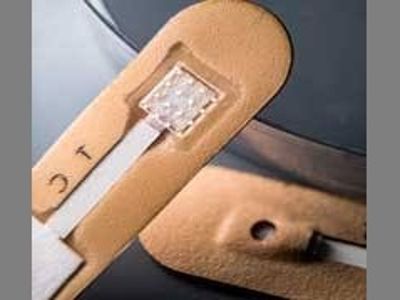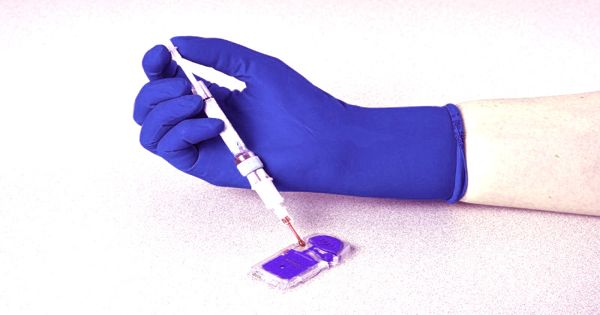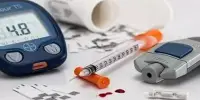Testing for malaria is as simple as a Bandage and delivers results in minutes
Testing for malaria could become as simple as putting on a band-aid. A test for malaria looks like a bandage but can diagnose the disease in minutes without the need for medical expertise or specialized equipment. That’s the idea behind a platform developed by Rice University engineers who introduced a microneedle patch for rapid diagnostic testing that does not require extracting blood. Researchers at Rice University have developed a microneedle patch that can rapidly detect the presence of malaria in interstitial fluid.
A test for malaria looks like a bandage but can diagnose the disease in minutes without the need for medical expertise or specialized equipment.
The novel test taps into protein biomarkers contained in interstitial fluid, also called extracellular fluid — which is what people generally recognize as the fluid inside blisters but surrounds all of our body’s cells. The device detailed in the Nature journal Microsystems and Nanoengineering draws upon protein biomarkers contained in dermal interstitial fluid, which people generally recognize as the fluid inside blisters but surrounds all of the cells in the skin. Users can apply the patch to their skin, as you would a bandage, and then obtain a result in as little as 20 minutes. This fluid contains a multitude of biomarkers for various diseases, such as malaria, which can be used for rapid testing. The technology is low-cost and requires no expertise to utilize. The disposable patches could be programmed to detect other diseases, potentially including COVID-19, said mechanical engineer Peter Lillehoj of Rice’s Brown School of Engineering.

“In this paper, we focus on malaria detection because this project was funded by the Bill and Melinda Gates Foundation, and it’s a big priority for them,” said Lillehoj, who joined Rice in January as an associate professor of mechanical engineering. “But we can adapt this technology to detect other diseases for which biomarkers appear in interstitial fluid.”
Malaria is a significant killer in many parts of the world where access to medical services is limited or non-existent. Obtaining a laboratory-based malaria diagnosis is challenging or impossible for many people living in such regions. Low-cost, point-of-care diagnostic alternatives are clearly needed, and this latest technology may fulfill these criteria.
The sticky patch has 16 hollow microneedles in a 4-by-4 array on one side, coupled with an antibody-based lateral-flow test strip on the other. The antibodies react when they sense protein biomarkers for malaria and turn two readout lines on the strip’s exposed surface red. If the test is negative, only one line turns red.
The needles, only measuring 750 microns longs and 373 microns wide, are attracted to water, so the fluid is drawn in and flows through to the test strip. Once the test is complete, the device can be removed like any bandage. The hollow needles are 375 microns wide and 750 microns long, enough to reach the fluid within the skin that is typically between 800 to 1,000 microns thick. The needles are sharp enough to overcome the mechanical stress of entering the skin.
As Lillehoj claims, although microneedles and antibody tests strips are nothing new, their test is the first one to combine them into a simple, inexpensive package that can be easily manufactured and deployed where needed, especially in developing regions where finger-prick blood sampling and the availability of trained medical staff to diagnose samples may pose a challenge
“Xue and I have applied the patch to our skin, and it doesn’t feel painful at all compared to a finger prick or a blood draw,” Lillehoj said. “It’s less painful than getting a splinter. I would say it feels like putting tape on your skin and then peeling it off.”
They think the familiar form factor may provide some comfort, especially to children.
The researchers estimate that the device may cost as little as $1 if manufactured in bulk, suggesting that it may be useful in low resource regions. Its appearance as a bandage helps to make it more relatable and less daunting for non-clinical users and not scary for the patients getting screened.














